Painting with Clay
Painting with clay is a surprisingly fun and easy way to explore mark-making in a new way. During one of The Carle’s recent workshops for educators and parents, participants made paintbrushes with twigs, tree branches and twine. We then used watered-down clay to paint pages for a book we bound with a twig and rubber band.
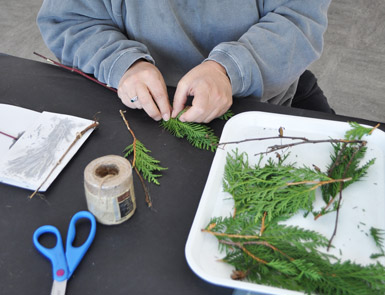
For the “bristles” of the brushes I collected several branches from the Thuja (or arborvitaes) trees that grow behind The Museum. We used the Thuja branches because that was what was available. It would be interesting to make a variety of brushes using different of coniferous branches, and other plants, trees and shrubs.
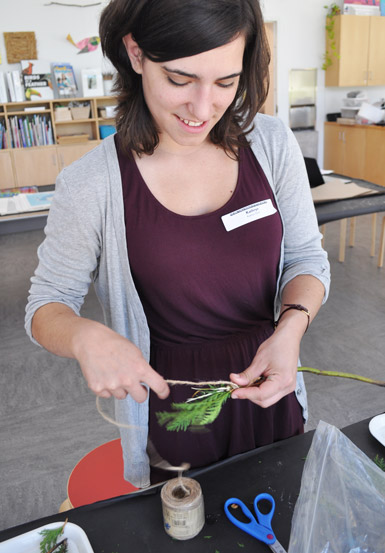
We attached the green branches to long sticks using natural jute twine. If you don’t have jute you could also use yarn, ribbon, wire, or zip ties. These brushes aren’t intended for multiple uses, but I’m sure you could rinse and reuse them for a couple days before they got too dried out.
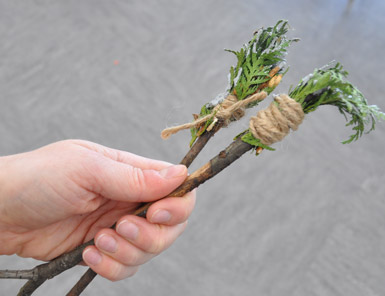
This idea is adapted from Learning4Kids.net. I’ve pinned it to The Carle’s “Bridging Art and Nature” Pinboard here, where you’ll find many more fun nature-themed activities and ideas.
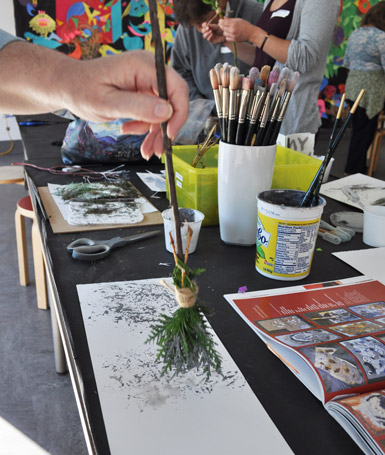
We created the clay “slip” by watering down Nasco air dry clay. We used long sheets of watercolor paper to paint on, but you could also use other porous surfaces like pieces of of cardboard, masonite or wood.
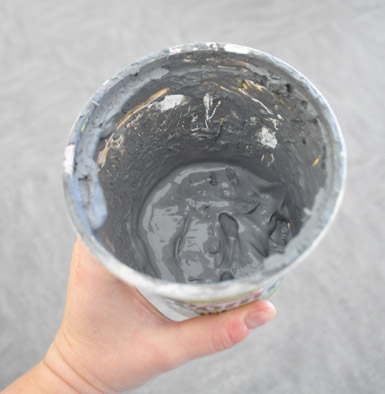
Keep adding water to the clay until it is the consistency of pudding, but you could thin it down even more to get more of a washy look. Clay “slip” is traditionally what you use in ceramics as the glue to attach clay pieces together into one sculpture. Slip can be stored in a sealed container in a cool, dry place for a few days. If it starts to dry out, just add more water until it has the consistency you like. Only mix what you can use up in a few days so it doesn’t get moldy.
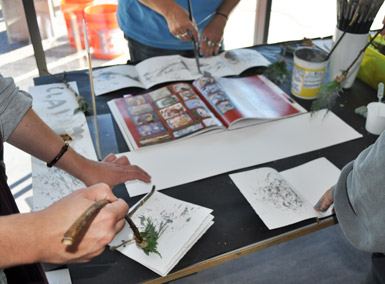
Some participants use dried up leaves, seeds and grass to press into their wet clay.
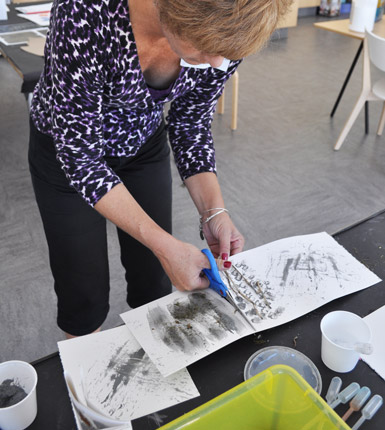
After the clay was completely dry (it dries very quickly) you may want to brush clear Mod Podge over the marks to keep the clay from flaking off of the paper. Our inspiration for drawing with clay came from this book:
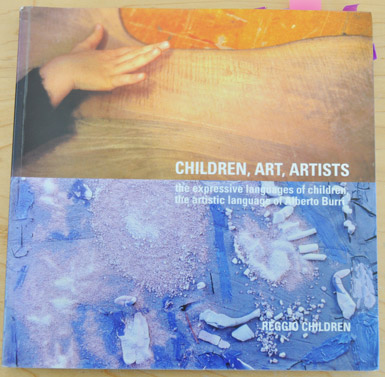
Children, Art, Artists: The Expressive Languages of Children, The Artistic Language of Alberto Burri by Reggio Children. The book has a section on using natural materials with young children and experimenting with mark making.
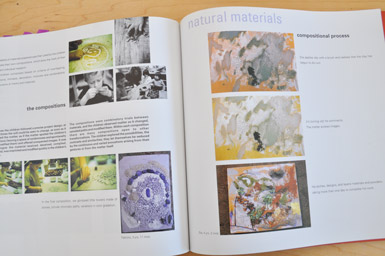
The artists who created the beautiful, thoughtful compositions in the photo below were only 3 and 4 years old!
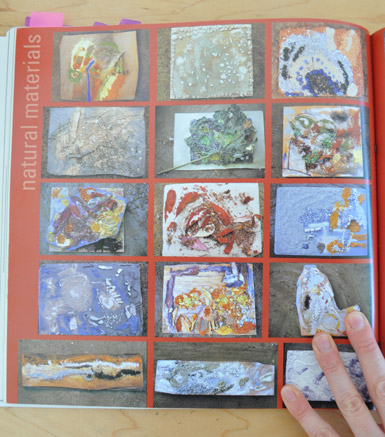
For simple steps to bind a stick and band book like ours, see our Stick & Band Book instructions.
After making your own twig and branch paint brush, try using other natural materials as mark-making tools!

